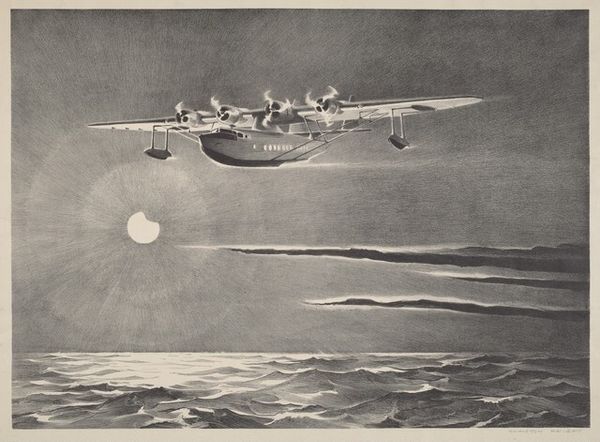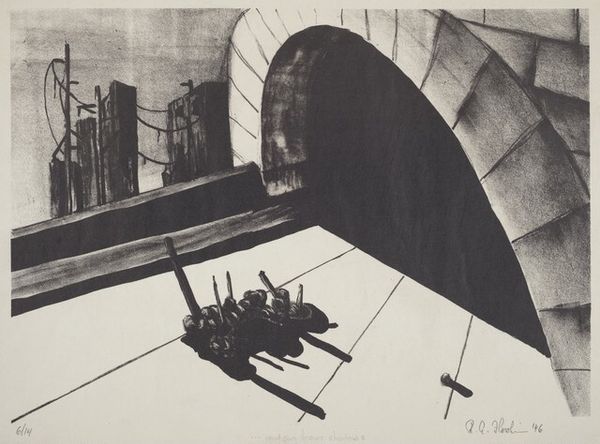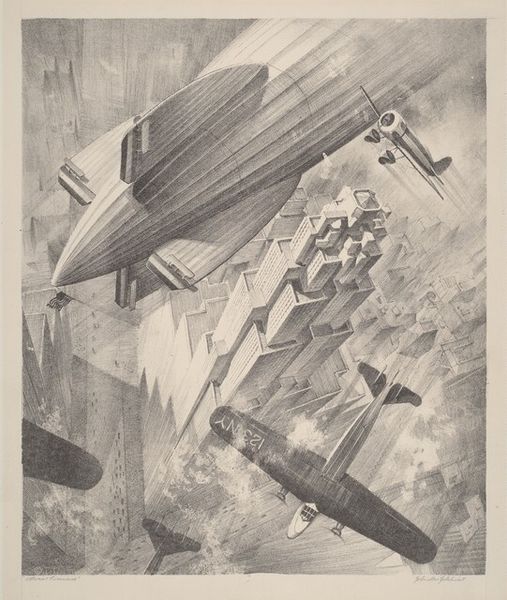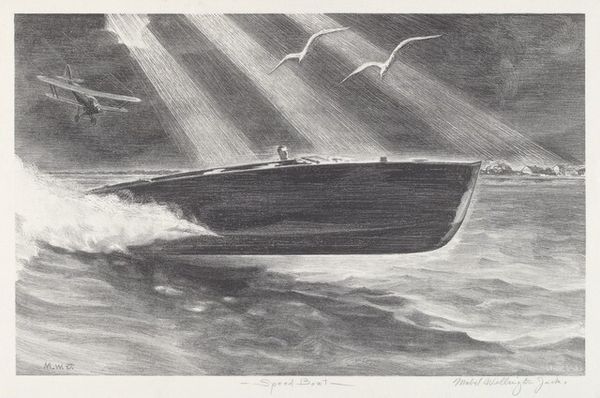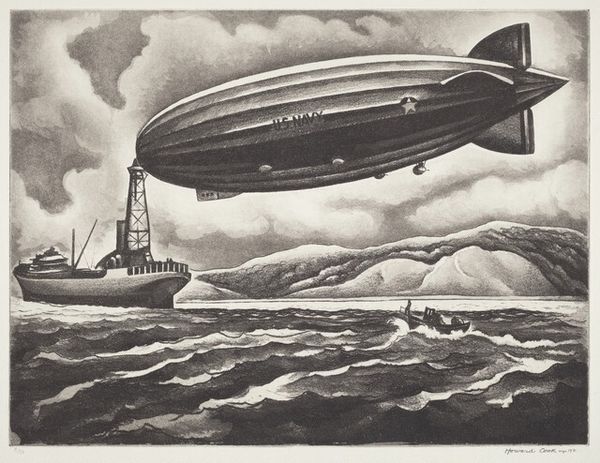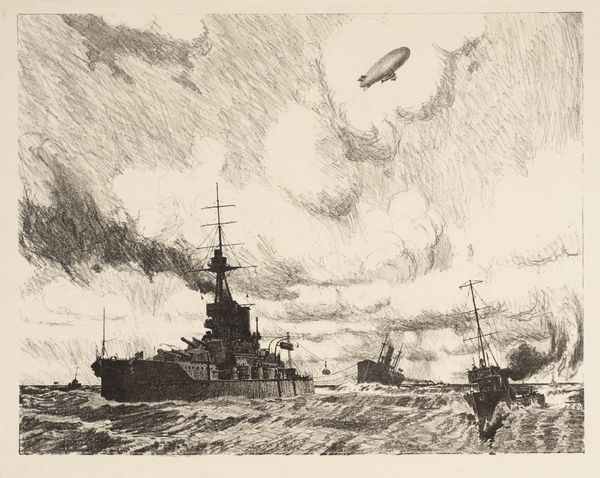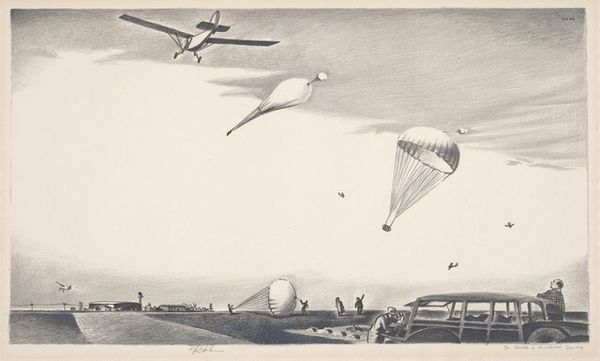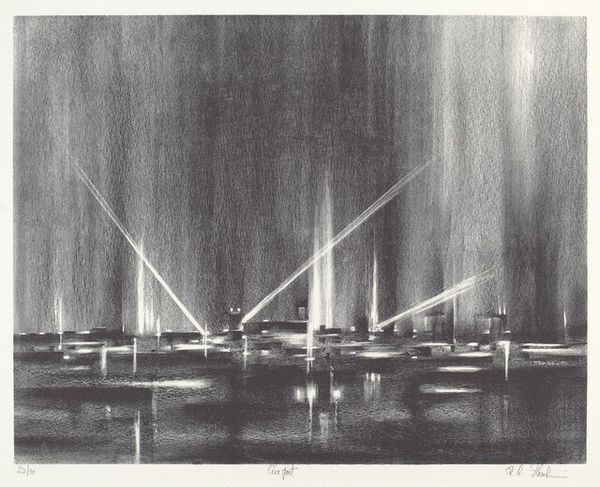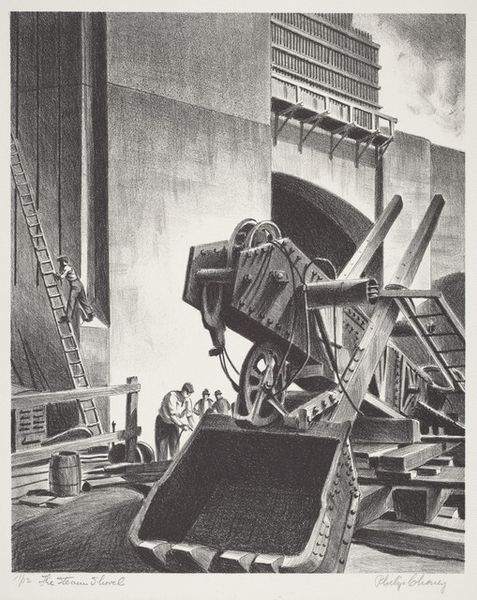
print, graphite
# print
#
graphite
#
cityscape
#
graphite
#
modernism
#
realism
Dimensions: plate: 30.16 × 38.1 cm (11 7/8 × 15 in.) sheet: 38.74 × 47.63 cm (15 1/4 × 18 3/4 in.)
Copyright: National Gallery of Art: CC0 1.0
Curator: Welcome. We're standing before William Heaslip’s “Airport,” a graphite print from 1934. It captures a night scene at what appears to be a bustling airfield. What's your immediate take? Editor: Striking. The sharp contrast of light and shadow creates a really palpable atmosphere, almost film-noir. I’m drawn to the sort of energy and implied narratives hinted at in the group of waiting figures. It's charged. Curator: Absolutely. Heaslip masterfully uses graphite to highlight the industrial forms. Look at the weight of the hangars and the metallic sheen of the aircraft bodies. One really notices how the composition emphasizes production. This was created in an era obsessed with industry. The planes are beautifully crafted machines – their surfaces reflect the labor involved in aviation development. Editor: Yes, and situated in the 1930s, this resonates deeply. We see this tension between technological optimism and economic uncertainty defining social and political identities of the era. Aviation was developing rapidly, offering freedom while the world edged toward more ominous things. Curator: Indeed. Note the sheer scale. Graphite allows him to manipulate darkness in the composition. Notice, in contrast to some artworks of that era, his ability to balance industrial realism with his technical print making skills and create the effect that each item, aircraft, figure, is very very specific to a specific craft and/or manufacturing era. It has the sharp detail of a photo without being a simple reproduction of photography. Editor: That balance is crucial. And how these groups of men watch! To me, their placement hints at gendered dynamics, the world of mechanics and air travel overwhelmingly a man’s world. But this print invites that kind of layered interpretation – it's not just about marveling at planes, it is also a representation of the moment and a particular point of view from which people were living their lives in this very place and at this very moment in history. Curator: Well said. I was lost in the technical facility. To add nuance, thinking in terms of aviation development, Heaslip would probably like our close look into production as well. Editor: So, in looking beyond aesthetics, in whose interest were this airport, its design, its production? Who had the opportunity to access these modern, fast modes of transportation, what did the labor forces that manufactured it look like...These questions begin to hint at social power relationships implicit within Heaslip's technical facility. Curator: I am sold! A fascinating piece that is so indicative of modernity! It reflects his meticulous touch, and opens onto much bigger conversations, then and now. Editor: Exactly. Seeing how it mirrors those ongoing complexities. Spot on.
Comments
No comments
Be the first to comment and join the conversation on the ultimate creative platform.
